 Invitation Invitation
ALL THE WAY THROUGH VOIVODINA
Yawls on the Road, Carts on the Danube
Wherever you go through the northern Serbian province, you cannot be mistaken. Beautiful towns and gifted people, beautiful sights history and culture, a never-ending plain and two mountains, porches and farms, wheat and wine, poets and tambouritza players, and many more which cannot be mentioned here – all of this can make your trip last longer, even a life-time, and it could make you stay forever even if you think you left a few days later
By: Aleksa Mitić
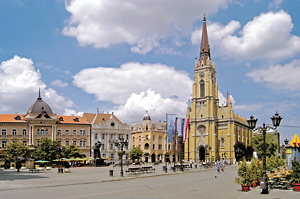 Voivodina. A never-ending, fertile and rich plain. Wherever you turn, any side you choose, you face important history, valuable excavated objects, beautiful buildings, castles, farms, porches, wine cellars from which the divine beverage reached European courts. It was even delivered to the United States. Voivodina. A never-ending, fertile and rich plain. Wherever you turn, any side you choose, you face important history, valuable excavated objects, beautiful buildings, castles, farms, porches, wine cellars from which the divine beverage reached European courts. It was even delivered to the United States.
Voivodina is a juncture of cultures and people, who have all left their traces through centuries. Testimonies of the fact date from two millenniums ago through many layers (Roman, Byzantine, Turkish, Hungarian…) reaching the Serbian Dukedom, Serbia and the present day. Many steppe nations went into campaigns through Voivodina (Huns and Avars are the famous ones), and the Celts went in their wooden ships down the Danube, and when they found a fertile soil they would unpack and build houses. The area of Voivodina was settled by the Germans, the Greek stopped there on their pursuit of the golden fleece. Besides Hungarians, Slovakians, Rutherians, Ukrainians, there were also Armenians, Jews, Vlachs... The Serbs were the most numerous ones, much more than other people all together. The statistics claim that about two million residents populate Voivodina and 22 nationalities. They live in harmony and mutual respect, like nowhere else in the world. Not even great political broking, with huge budgets, could not violate their harmony.
Srem, Banat and Bačka – three heroic hearts.
WHEN YOU STAND ON A PUMPKIN
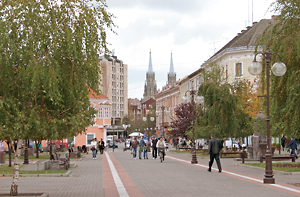 If you stand on a pumpkin (ludaja, in Serbian), they say that you can see all of Voivodina. It is so flat. The pumpkin can grow very big – like the one which was grown by Milan Desnica of 122 kilograms and was the winner of the traditional event ”Pumpkin Days” in Kikinda. If you stand on a pumpkin (ludaja, in Serbian), they say that you can see all of Voivodina. It is so flat. The pumpkin can grow very big – like the one which was grown by Milan Desnica of 122 kilograms and was the winner of the traditional event ”Pumpkin Days” in Kikinda.
Those who say that Voivodina could be the granary of all Europe are right, but it would need some investment. But, we should not forget that it is not only a granary. The best apples and pears come from the vicinities of Bela Crkva, the place where the traditional ”Flowers Carnival” is taking place and whose lakes are visited by many guest from all Serbia and abroad, in the summertime. There are many quince plants, for preserves, kitnkes (quince jelly), and the famous quince brandy. They also grow poppy, to make the famous poppy strudel.
There are vineyards, which is a special story. The legends says that the noble vine was brought into our area, by the Roman Emperor Probus, a man from Srem by origin The oldest book on wine, in Serbia, is The Experienced Wine Cellar Owner (Iskusni podrumar), printed in Vienna in 1783. The biggest area of vineyards of Hungary was located in Voivodina, and probably of all Europe of the 19th century (on 17 thousand acres). The wine tradition, two millenniums long, is still preserved in the vineyards of Voivodina – of Subotica and Horgoš, Vršac, Fruška Gora, and in the famous ”wine oasis” like the one on the Pearl Island near Bečej (in the end of the 19th century, on about two thousand acres of vineyards of Gedeon Rohatzi, vine from Algeria was grown and the famous ”krokan” was produced).
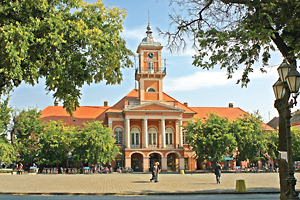 And we should make one thing clear – Voivodina is not really flat as a pan, as they say. Both of its mountains were once islands in the Pannonian Sea, and the higher one is now called a hill. Namely, Vršački breg (Gudurički peak, 641 meters) is higher than Fruška gora (Crveni čot, 539 metres) which is 75 kilometres longer, declared to be a national park in 1960, for its rich flora and fauna. And we should make one thing clear – Voivodina is not really flat as a pan, as they say. Both of its mountains were once islands in the Pannonian Sea, and the higher one is now called a hill. Namely, Vršački breg (Gudurički peak, 641 meters) is higher than Fruška gora (Crveni čot, 539 metres) which is 75 kilometres longer, declared to be a national park in 1960, for its rich flora and fauna.
Fruška Gora was an inspiration to many great poets (Branko Radičević, Zmaj, Milica Stojadinović Srpkinja, Miloš Crnjanski...). In its monasteries, where are the relics of many Serbian saints, Vuk Karadžić, Dositej Obradović and Filip Višnjić all lived and worked. Painter who were born in Voivodina make part of one phase of Serbian painting. They were inspired by Voivodina and the also painted it.
I AM ASKING YOU MOST KINDLY
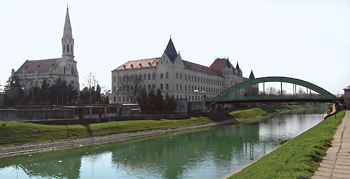 Fat and passion cannot be separated in Voivodina. It is the only place where bacon has its festival. Zmaj, a poet and a gourmand, wrote ”The Ode to the Sour Soup”. In the Great Serbian Cookbook from 1878, a woman from Novi Sad, Katarina Popović Midžina is mentioning two sorts of ham – the ”fatter one” from Banat and the ”meatier” one from Bačka. The sausage is from Srem. People still make sausages several kilometres long, which make part of the Guinness Book of World Records. Back in the 17th century, a chronicler Nevelkowsky noted that people of this area are ”dangerous with meals”. Fat and passion cannot be separated in Voivodina. It is the only place where bacon has its festival. Zmaj, a poet and a gourmand, wrote ”The Ode to the Sour Soup”. In the Great Serbian Cookbook from 1878, a woman from Novi Sad, Katarina Popović Midžina is mentioning two sorts of ham – the ”fatter one” from Banat and the ”meatier” one from Bačka. The sausage is from Srem. People still make sausages several kilometres long, which make part of the Guinness Book of World Records. Back in the 17th century, a chronicler Nevelkowsky noted that people of this area are ”dangerous with meals”.
We should mention names of many houses, farms, cooks... Or dishes of ostrich, mangulica pig, game, various fish... Or many specialties from 22 national cuisines...! Or some of many curiosities, like the one in ”Nepker” restaurant in Subotica, where they make the best tripes in the Balkans and they serve them in a piece of bread instead in a bowl!
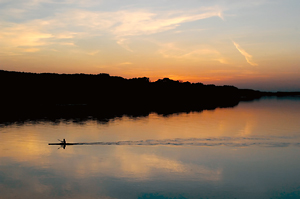 What ever road you take though Voivodina you will not be mistaken. You will have a lot to experience and see. If you go to (north)west you will reach Sombor, a town of greenery, the town of the painters Milan Konjović, Sava and Dragan Stojkov, of the poet Laza Kostić. In the representative building of the municipality, in the festivity hall, you can see the biggest painting in Serbia, The Battle of Senta (7x4 metres), which was painted by Ferenz Eisenhut in Munich. What ever road you take though Voivodina you will not be mistaken. You will have a lot to experience and see. If you go to (north)west you will reach Sombor, a town of greenery, the town of the painters Milan Konjović, Sava and Dragan Stojkov, of the poet Laza Kostić. In the representative building of the municipality, in the festivity hall, you can see the biggest painting in Serbia, The Battle of Senta (7x4 metres), which was painted by Ferenz Eisenhut in Munich.
Only 15 kilometres away is the village of Bezdan, well-known for fishing and hunting tourism and fabrication of silk damask. In the factory, which is under protection of the state, they weave only on hand-looms (jacquard weaves) from 1871.
Travelling on the road Subotica-Novi Sad to the south, in Čenej you can visit ”Salaš 137”, made for hedonist people. You eat with leisure, you rest under walnut treesm you can ride horses, you can practice archery, you sleep in rooms with furniture from the 19th century.
Whenever you travel through Voivodina, you will realize that the music here is an important ”shape of time”. The music owes to Voivodina as much as Voivodina owes to the music. You can pick the instrument and the genre.
THE END OF THE WORLD
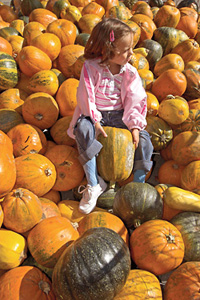 Novi Sad, the biggest town and the capital of this beautiful area, has so many cultural monuments so they call it Serbian Athens. If you happen to go there, you should prepare yourselves for a few weeks, or months, or years, just like the National Review would have to make a special edition dedicated to this town. Novi Sad, the biggest town and the capital of this beautiful area, has so many cultural monuments so they call it Serbian Athens. If you happen to go there, you should prepare yourselves for a few weeks, or months, or years, just like the National Review would have to make a special edition dedicated to this town.
Opposite of it, on the right bank of the Danube, is one of the most beautiful medieval fortresses in Europe, the Petrovaradin Fortress. Today, it had art ateliers, a hotel in which used to play the famous Janika Balas with his tambouritza orchestra. People used to party all night, guests came from everywhere to have fun. For years now, it is the place where the music festival ”Exit” is organised, one of the most visited and most attractive festivals in Europe. (”I ran away from my own country to spend a crazy week here. But, there are so many English people here that I feel like home!” said one of the young guest from London, last year.)
We know that there are so many interesting things that we cannot mention all of them. If you take the highway to the south from Novi Sad, you reach Kovilj (the famous monastery of the same name is nearby). The house called ”Arkanj”, on Dunavac, is still standing there, from the 19th century, which was later called ”The house at the end of the world”. We wrote about it, but we mention it again, so that you do not forget it.
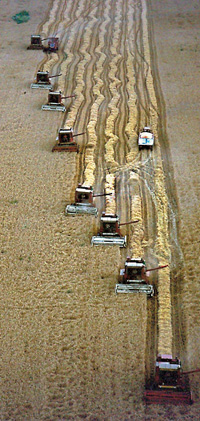 The spring of salty water in Stari Slankamen originates from the Roma era. The Turks had build a salty bathroom, the Hungarian authorities have enclosed the spring in 1834 which is still supplying the Special Hospital ”Doctor Borivoje Gnjatić” with the healing salty water and filling the pool in the spa. The spring of salty water in Stari Slankamen originates from the Roma era. The Turks had build a salty bathroom, the Hungarian authorities have enclosed the spring in 1834 which is still supplying the Special Hospital ”Doctor Borivoje Gnjatić” with the healing salty water and filling the pool in the spa.
Kikinda, a town of Voivodina which you should visit, has a rich cultural tradition and a very important artistic treasure. The International Symposium ”Terra” is taking place there, and many monumental sculptures are made in the sculpting colony. Until now, there had been more than 300 artists and about 500 terracotta were made. The mammoth skeleton was discovered in that place, which was nicknamed Kika. Now, it’s one of the town’s symbols.
In Kanjiža, a soil rich in oil, natural gas and thermal waters, there is a rehabilitation and recreation centre with medicinal mud. The River Tisa, vivid vicinities, hunting grounds, Selevenjska forest and a desert, cooking specialties, cultural and sports events make Kanjiža really attractive.
The tourist image of Voivodina is not complete if we omit ethno-tourist events, more than 800 of them, which are organized all year long. Geese fights and the competition in rolling Easter eggs in Mokrin, wine festivals in Vršac, Karlovci, Inđija (...),”The Great Spinning Festival of Bunjevac and Škoač” in Subotica, the Regatta on Palić, the Bread Festival in Pećinci (with the unique Bread Museum in the world, after the one in Ulm, in Germany), gatherings of tambouritza players in Ruma or Deronje, ”Bean Festival” (”Pasuljijada”) in Temerin, ”Strudel Festival” (”Štrudlijada”) and ”Dužijanca” (horse races) in Subotica, hunting the catfish in Bela Crkva...
***
The soil bears a man
How Voivodina is fertile and beneficial is well described by Milorad Pavić in his novel Predeo slikan čajem when he says that such soil could even bear a man.
***
Wine
Many wine and picking festivities in Voivodina are an obligatory part of the culture and the tourist offer, and many of its towns and settlements have grapes in their coat-of-arms. There is one story which is still told, among many other interesting stories and details – an owner from Čoka, Arthur Lederer, at the end of the 19th century, built one of the biggest wine cellars in this part of Europe, under the level of Tisa River. In the legendary wine barrel, of 67 thousand litres and Gypsy music, a game of cards would last for days.
Below Sremski Karlovci is 11 kilometres of wine cellars They produce must, then the sweet rampaš, and then, with much patience, first-class wine of it. The wines of Fruška Gora are famous for the ”Bermet” and the ”Ausbruch” (as an aperitif, made of dry twig, claimed to be the part of the menu on the ”Titanic”).
***
Holy mount
Krušedol, Grgeteg, Hopovo (Staro and Novo), Vrdnik, Remeta (Velika and Mala), Beočin, Jazak, Šišatovac, Kuveždin, Privina Glava... Seventeen medieval monasteries, built as endowments of royal families in the period when the centre of Serbian spiritual life was moved to the north, because of the Turks, and stringed in Fruška Gora. That is why the call it the other Holy Mount of Athos.
***
Centres
Many centres of Serbian culture are connected to Voivodina. For example, the centre of Matica srpska, founded in 1826, is in Novi Sad. The oldest literary magazine, Letopis Matice srpske, was founded in 1825, in Novi Sad. The Serbian National Theatre was opened in Novi Sad in 1861 and the opening of the famous High School in Sremski Karlovci in 1871... That was where went many great people like Zaharije Orfelin, Branko Radičević, Zmaj, Laza Kostić, Jovan Sterija Popović, Mihajlo Pupin, Uroš Predić, Isidora Sekulić, Miloš Crnjanski...
***
Growing together
Right after the Great Migration with Arsenije Čarnojević in 1690, the Austrian Emperor said that he will choose his duke in his province (krajina), which is the first mention of dukedom (vojvodstvo). The name Vojvodina Srbija or Srpsko Vojvodstvo originates from 1848, on the famous May Parliament in Sremski Karlovci and then in some documents. Since November 25th 1918, with the decision of the national Assembly in Novi Sad, Vojvodstvo Srpsko became a part of Serbia.
***
From Eiffel to Einstein
Many great people from around the world came to Voivodina. The famous Eiffel projected the stadium for ”Bačka” Football Club, established in 1901, he built a lock on Tisa River and the power plant as well, and many more. The famous Albert Einstein, with his wife Mileva Marić, lived for some time in Novi Sad, in Kisačka Street, and his children were baptized in an Orthodox church.
|
